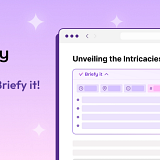6 Tips to Read Faster and Improve Comprehension

Picture this: a mountain of documents, a never-ending stream of articles, and a reading list that seems to multiply with every glance. In a world brimming with information, the ability to read fast and precisely is not just a skill — it’s a superpower that can transform the way you absorb knowledge.
In today’s article, we’ve got 6 tips that are like your secret weapons for reading quicker and actually understanding what you’re reading. If you’re thinking, “Yep, that’s my struggle,” then you’re in the right place. Now let’s start!👇
1. Stay focused
First, find a quiet spot, but let’s not stop there. Research shows that our attention span peaks at around 25 minutes. That’s why we suggest you balance reading time and break: aim to read for 25-minute intervals, then take a short break to refresh your mind. You can use the Pomodoro technique for this, which suggests working for 25 minutes, followed by 5-minute breaks. Also, avoid multitasking when reading, such as checking emails or social media messages, as this will slow you down and reduce comprehension. *Tip: turn on the “focus mode” on your phone when needed!
*Tip: turn on the “focus mode” on your phone when needed!
2. Get a summary first
Before you start to read the whole article, paper, or document, give yourself a quick summary of what it is talking about generally. But how can you get a summary even before you read? That’s where you can work smart — use an AI summarizing tool to help you. There are tons of AI tools out there, but we’re not too shy to say that Briefy is one of the best. It gets you in-line summaries so that you don’t need to copy and paste content to other summarizing websites. Simply open any content page and click on the Briefy button, and voila! You’ll see concise summaries in bullet points, article sentiment, and keywords. This helps you get a glance at the key points of the article so that you can easily follow. Try out Briefy and see how it helps! 👇

3. Look for the main idea
Finding the main concept in a paragraph or article is key to understanding its significance. Don’t pay too much attention to every detail, and don’t just keep reading all the way down without digesting it. Instead, read the introduction, conclusion and subtitles first. This method provides you with an overview of the entire content without getting stuck in intricate details.
4. Avoid subvocalizing
Subvocalizing is the process of silently pronouncing each word in your head as you read. While this may seem like a reasonable way to read, it can significantly reduce your reading speed. That’s because our brains can process words and phrases faster than we can say them. Try to tell yourself to stop subvocalizing whenever you notice you are in order to train your brain to read faster without pronouncing each word.
5. Improve your vocabulary
Expanding your vocabulary can help you read faster and comprehend the text better. That’s because when we know more words, our brains can process them faster and understand the meaning behind the text. Try to learn new words by reading various genres, looking up unfamiliar words in a dictionary, and taking notes on the meanings frequently.
6. Take Small Bites
If a book or article is long, break down the material into manageable sections. Read two paragraphs, then take a quick break in your mind to remember what you read. This helps you not feel overwhelmed and lets you understand the info better.
Reading is a vital skill that helps improve our knowledge and productivity. By following these six tips, you can read faster, comprehend better, and achieve your reading goals. Remember to stay focused, get a summary first, set a goal, look for the main idea, avoid subvocalizing, improve your vocabulary, and read in small parts. With practice and determination, you can read like a pro and unlock the endless possibilities that reading offers and never get information overloaded.
Follow us on Twitter & LinkedIn.
Written by Nan Ha.
